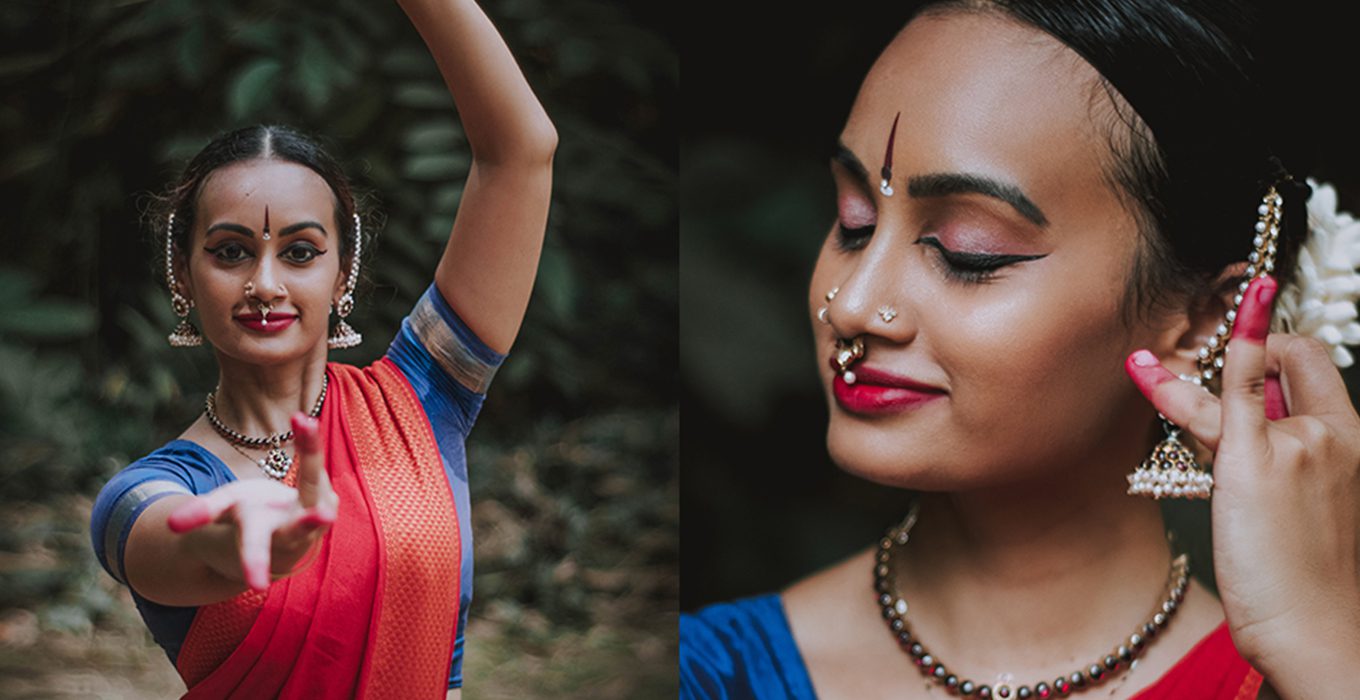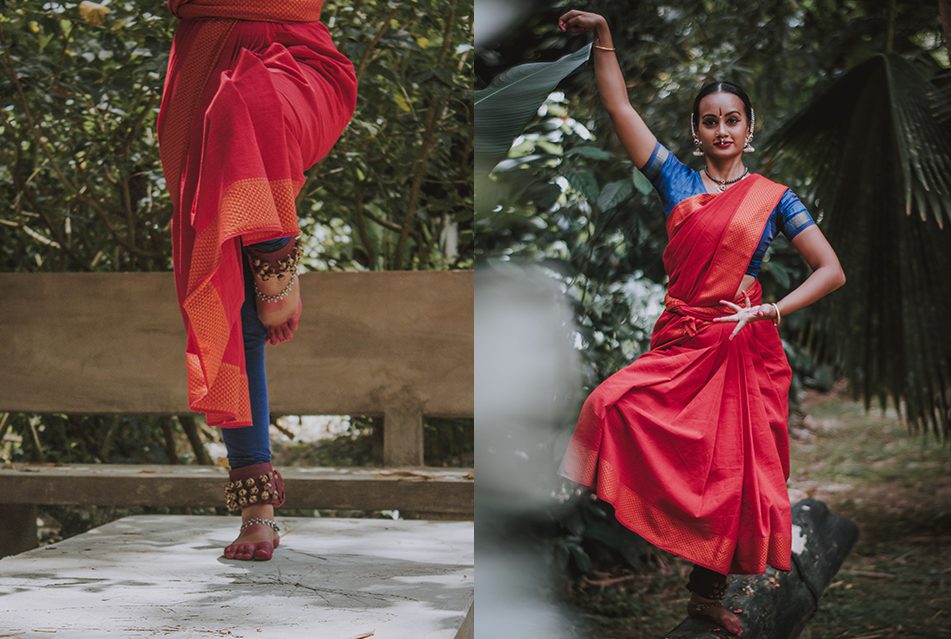

May 30, 2020
In an industry filled with evolving artistic landscapes, Alana Rajah has dedicated her life to ensuring that a 2000-year-old art form flourishes in modern society.
Alana has been a practitioner of Bharatanatyam, a form of Indian Classical Dance, for more than 20 years. As the founder of the Adavallan Art Academy in Chaguanas, she is dedicated to fostering an appreciation for and recognition of this ancient art form which is a significant domain of Indian cultural heritage.
In this interview, Alana reiterates her passion for preserving Bharatanatyam in its natural state and gives us insight into her life as an Indian Classical Dancer and how it has shaped her into the person she is today.
“Under the umbrella of Indian Classical Dance, there are eight forms which stem from particular states across India. The form that I specialize in belongs to the state of Tamil Nadu and is called Bharatanatyam.”
Tell us about Alana, the individual.
ALANA: I came from a single-parent family, so all my life, I was taught to be self-sufficient, independent, pursue my dreams and nurture my faith. I have been exposed to a life of discipline, happiness and living in the moment.
And Alana, the performing artist?
ALANA: Alana, the performing artist, is someone who wants to contribute to society in a way that will restore a culture and tradition that seems to be lost at the moment.
And that culture and tradition would be?
ALANA: Dance, in its authentic or purest form.
What form of dance did you specialize in?
ALANA: Under the umbrella of Indian Classical Dance, there are eight forms which stem from particular states across India. The form that I specialize in belongs to the state of Tamil Nadu and is called Bharatanatyam.
Tell us about your experience learning Bharatanatyam in India as opposed to learning it in Trinidad and Tobago.
ALANA: Locally, I did not have an in-depth learning experience. It was a brief introduction to the art form that leaned towards an extracurricular activity. Whereas in India, I learned to understand its roots. They sought to inspire and teach us in a manner that transformed our lives. It was a course designed to train the dancer as a performing artist and teacher. The process instils values that shape your entire perspective on life; on being a compassionate human being, learning discipline and fostering a commitment to achieving what you set your mind to.
Do you feel as though your time in India, shaped who you are now?
ALANA: Definitely. It was a huge culture shock at first. People tend to have very Bollywood expectations of India, but it’s so different. Their absolute dedication to art and culture is phenomenal. You would have a very different experience if you lived or studied there.
“I prefer living there compared to Trinidad. I fit in. I felt comfortable because art was so free, and as an artist, I was allowed to be very open-minded. You could have created anything, and it would’ve been appreciated or critiqued within reason. The audience absorbed and appreciated your work. There wasn’t a drought of dance, music and visual art. Anything you could imagine where art and culture were concerned; they had it. They fueled and invested in it.”
What inspired you to pursue Indian Classical Dance?
ALANA: I was introduced to the form in Trinidad, studying it for ten years. From childhood, I knew it was supposed to be my career. As I got older, I realized that what I learned in Trinidad merely scratched the surface. I knew that if I wanted a comprehensive education, I would have to go back to its roots and delve into its perspective and environment.
When I was researching it, I came across a woman called Rukmini Devi Arundale. She was considered an exponent and pioneer of the field. She was partly responsible for bringing the art form out of the temple sanctums and into the public to be widely accessible. At that time in India (Pre-Independence under British rule), all the exponents or temple ladies- the first practitioners of the art form, did not take it outside of the temple sanctums. The dance was done in praise of the Gods, making it a temple/ritualistic dance. At that time, you would have to be born into the families to learn it. However, Rukmini Devi Arundale took the teachings of the dance and made it open for anyone to learn because she had a passion for art and wanted to inject it into society.
Now here I am, centuries later with no connection to this art form but totally inspired by how she revolutionized it. It used to be called Dasi Attam or Sadir before it got the name of Bharatanatyam, which she modified. She transformed the art form and gave it structure where it could be taught to the world.
Seeing that India is so rich in the arts, especially the performing arts, how would you compare it to Trinidad?
ALANA: When the Indians were brought to Trinidad by the British as indentured labourers, they held onto what they knew. From the time they left, they were disconnected from the evolution of all the art forms. Because of this, there is a considerable gap in knowledge. Frequently, people who practice Indian Classical dance do not research their origins and what they were like in their natural state. They go along with Bollywood. Nothing is wrong with Bollywood. It is a form in its own right- a fusion of everything from Western and Indian, but it’s not an actual Classical discipline. Similarly to Asian martial art forms which have multiple disciplines (karate, mixed martial arts, taekwondo), Indian Classical dances are disciplinary forms which have the intent of moulding an individual’s mind, body and soul.
What makes you as a practitioner of Bharatanatyam dance different from other practitioners of dance?
ALANA: I think what makes me different is my dedication to preserving the art form in its natural state. I try to adhere to the rules and regulations of the form. I challenge myself and my students to innovate, expand, change, adjust to different societies and audiences. Also, to take inspiration from modern dance or other forms while being respectful to the ancient rules and guidelines.
It’s like the saying, “You can’t learn something without knowing where it came from”.
ALANA: Precisely, I feel like turning a blind eye to what existed changes your entire place as a teacher. It changes how your students and the wider society perceive you. You won’t be achieving the higher purpose you set out to accomplish because there won’t be any humility. It would be an ego chase for a career path that gives you financial benefit but does not inspire your being or leave a good impression. You influence the people around you, whether you are aware of it or not. Each of us has a purpose, and we affect one another like a line of dominoes. What you choose for your life should be hinged on how you want to inspire and affect change.
Do you feel content with the way Indian Classical dance is received and perceived in Trinidad?
ALANA: Unfortunately, no. I feel like surrounding Carnival culture, there are art forms that are stifled and just dusted under the carpet that do not get the freedom of expression that they deserve. My students are the channel for my existence; it is through them that I learn – and they all have different goals within art and culture. However, they know that by the time they reach a certain age, there is no platform for it. There is a lack of appreciation for it that kills the discipline and moulding immediately. I really hope that in future, awareness changes and that these artists who are so dedicated to the classical art forms – or any disciplinary art form – are not overshadowed by Carnival culture.
For the young people who may read this interview and decide to pursue dance, why should they explore an Indian Classical artform?
ALANA: I think because it changes your entire perspective on life. It teaches you to be strong and confident, and in today’s society, we need strength, confidence and faith. We also need humans to be more selfless, and I think art creates that. It teaches you to work hard, find the beauty in everything and elevate your emotional state. When you go through such a transformation, it dramatically impacts the way you navigate the world, enabling you to radiate kindness to the masses. This gives us hope for a better world.
“…in today’s society, we need strength, confidence and faith. We also need humans to be more selfless, and I think art creates that. It teaches you to work hard, find the beauty in everything and elevate your emotional state. When you go through such a transformation, it dramatically impacts the way you navigate the world, enabling you to radiate kindness to the masses. This gives us hope for a better world.”
FOLLOW: The Adavallan Art Academy


Interviewer + Creative Director: Jerel Ramsey Photographer/Videographer:
Andrew Dookoo